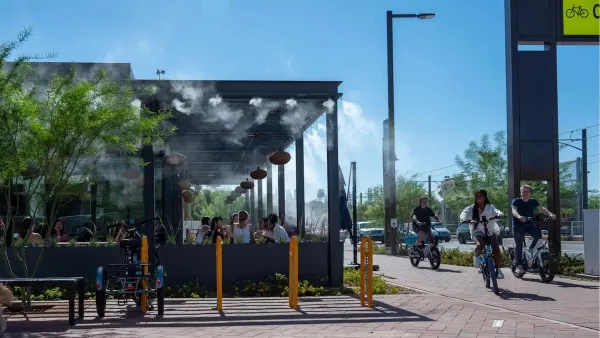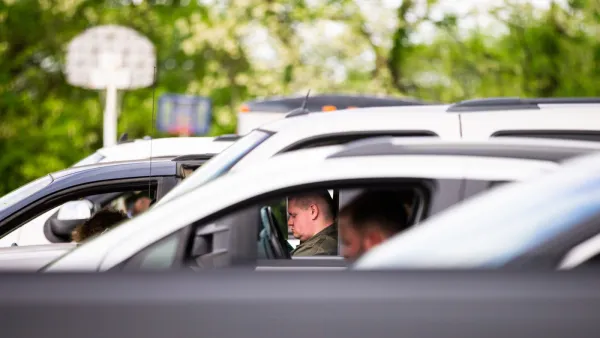Despite initial skepticism about its true potential for sustainable urbanism, the built-from-scratch “car-free neighborhood” is widely popular with its residents.

Culdesac Tempe, which billed itself as the nation’s first ground-up car-free neighborhood, seems to be a success for its residents, writes Ben Ikenson in Dwell.
With the first phase finished last year, the high-profile development continues to unfold on a 17-acre site along a light rail line in an established neighborhood about 15 miles east of downtown Phoenix. The $200 million project now includes 288 apartment units with about 300 tenants, reeling residents in with appeals of a healthier, more eco-friendly lifestyle, built-in community with ample amenities, and accessible transit to Tempe and the greater metro area.
According to Ikenson, the neighborhood received criticism for being relatively isolated and, according to Strong Towns, not “the incremental urbanism and thickening our cities need.” (Later, Strong Towns revised its opinion, noting “We all have a hand in building strong towns, and it can take many different forms. We’re here to celebrate every effort.”)
Residents seem satisfied with the neighborhood’s walkability, amenities, and transit access. The community offers free e-bikes and transit passes — and residents actually use them. Residents also say rents are reasonable, with studios starting at $1,300 per month in a region where median rent for a studio is $1,375.
Kevin DeGood, director of infrastructure policy at the Center for American Progress, acknowledged the community’s success, noting, “We need more housing and land use experimentation, not less. And bold experiments like Culdesac show there is real demand for alternatives.”
FULL STORY: America’s “First Car-Free Neighborhood” Is Going Pretty Good, Actually?

National Parks Layoffs Will Cause Communities to Lose Billions
Thousands of essential park workers were laid off this week, just before the busy spring break season.

Retro-silient?: America’s First “Eco-burb,” The Woodlands Turns 50
A master-planned community north of Houston offers lessons on green infrastructure and resilient design, but falls short of its founder’s lofty affordability and walkability goals.

Delivering for America Plan Will Downgrade Mail Service in at Least 49.5 Percent of Zip Codes
Republican and Democrat lawmakers criticize the plan for its disproportionate negative impact on rural communities.

Test News Post 1
This is a summary

Test News Headline 46
Test for the image on the front page.

Balancing Bombs and Butterflies: How the National Guard Protects a Rare Species
The National Guard at Fort Indiantown Gap uses GIS technology and land management strategies to balance military training with conservation efforts, ensuring the survival of the rare eastern regal fritillary butterfly.
Urban Design for Planners 1: Software Tools
This six-course series explores essential urban design concepts using open source software and equips planners with the tools they need to participate fully in the urban design process.
Planning for Universal Design
Learn the tools for implementing Universal Design in planning regulations.
EMC Planning Group, Inc.
Planetizen
Planetizen
Mpact (formerly Rail~Volution)
Great Falls Development Authority, Inc.
HUDs Office of Policy Development and Research
NYU Wagner Graduate School of Public Service





























